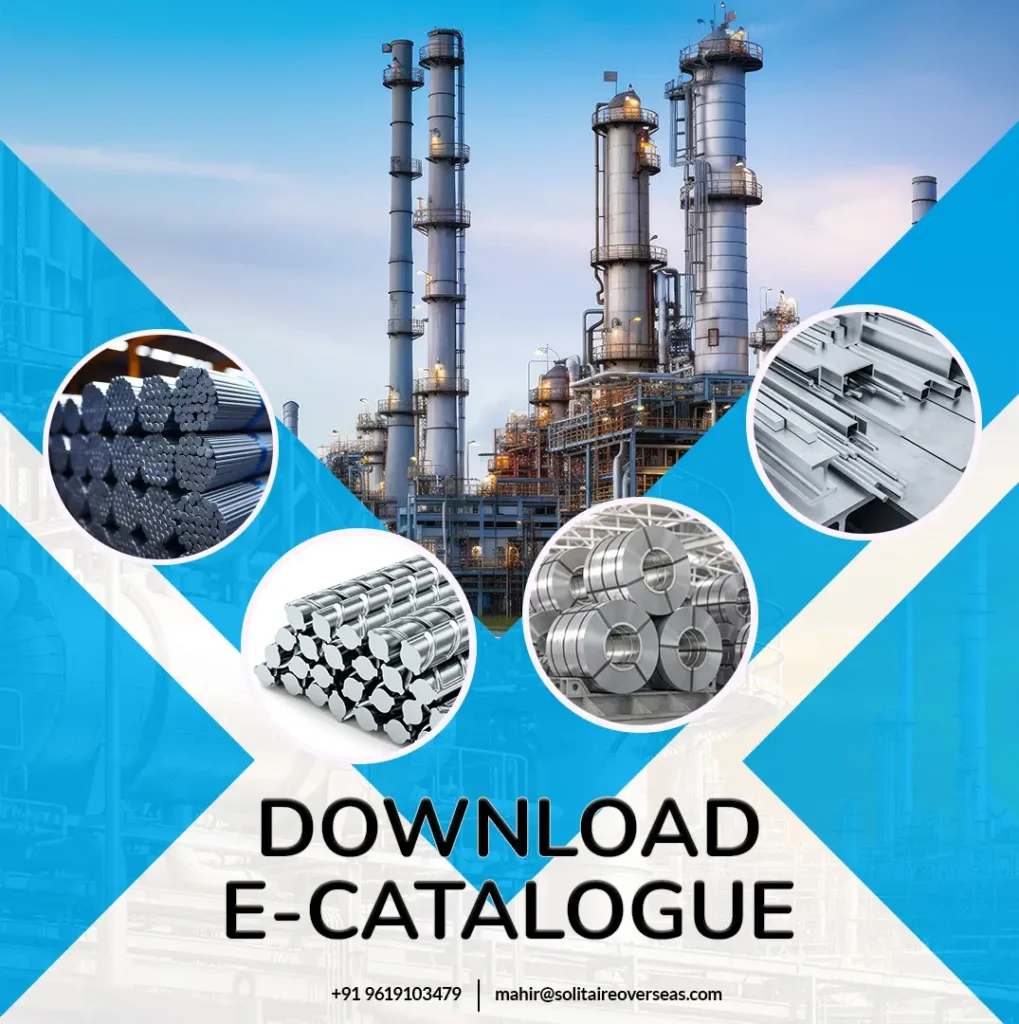What is Low Alloy Steel - Properties, Uses, Grades and Composition

Steel is generally divided into two main categories:
- Low Alloy Steel
- Stainless Steel (High-Alloy Steel)
Low alloy steel contains smaller amounts of alloying elements like chromium and nickel compared to stainless steel. Because of this, it does not offer the same level of heat, wear, or corrosion resistance as stainless steel. However, low alloy steel stands out for its excellent mechanical properties, strength, and affordability, making it a popular choice for many applications.
The following sections explain the benefits of low alloy steel and highlight some common applications where it is used to manufacture components.
Low alloy steel is a type of steel that contains carbon steel and other alloying elements, with a total alloy content of up to 12%. These steels are commonly used in applications requiring strength and oxidation resistance, especially in high-temperature environments.
Why Use Low Alloy Steel?
Low alloy steel offers several benefits that make it ideal for various applications:
- Affordable: Low production cost compared to other steels.
- High Strength: Strong and durable, even under tough conditions.
- Versatile Properties: Can be adjusted to meet different mechanical needs.
- Good Weldability: Easy to join through welding processes.
Common Examples of Low Alloy Steel:
- 4130 Steel
- 4140 Steel
- 4340 Steel
These grades provide a balance of cost, strength, versatility, and weldability, making them widely used in different industries.
Low Cost :
Low alloy steel, like 8620, is more affordable than stainless steel alloys such as MTEK 625 or MTEK 25-35. Stainless steels contain higher amounts of chromium and nickel, which provide excellent corrosion and heat resistance but increase the overall cost.
Low alloy steel is a great option for applications where cost efficiency and high strength are more important than heat or corrosion resistance. This makes it a practical and economical choice for many industries.
High Strength, Low Alloy Steel (HSLA) :
Low alloy steel offers excellent strength, often exceeding that of high-strength martensitic stainless steels like MTEK M-152, which are valued for corrosion resistance.
This makes low alloy steel a perfect choice for applications requiring high strength where corrosion resistance is not a top priority. It combines durability and performance at a lower cost.
Write to us
Low Alloy Steel Properties
1. Strength
- The yield stress of steel measures how much stress it can handle before permanently changing shape. For standard carbon steel, the yield stress is 235 MPa, while for low alloy steel, it reaches 345 MPa. This higher strength allows the steel to be lighter by reducing its cross-section without compromising durability.
- If the steel is prone to bending during use, additional processes like heat treatment are needed to enhance its properties. Modern methods, such as critical annealing followed by rapid cooling, further improve the steel’s formability. Yield stress for these steels typically ranges between 310 MPa and 345 MPa.
2. Welding Properties
Welding is a crucial factor when using steel. Low alloy steel generally has good weldability if proper welding techniques are applied. However, steels with higher carbon or manganese content may require preheating or the use of low-hydrogen electrodes to ensure smooth welding. In certain cases, hydrogen-free electrodes are mandatory, regardless of the steel’s thickness, to prevent defects during welding.
3. Corrosion Resistance
- High-strength low alloy steel is often chosen to achieve lighter weight and improved performance. However, its corrosion resistance must also be considered, especially for thinner cross-sections that are more prone to rust. To address this, protective coatings are applied to the steel surface to prevent corrosion.
- Some low alloy steels naturally offer better corrosion resistance due to alloying elements like copper, phosphorus, silicon, chromium, nickel, and molybdenum, which improve their resistance to rust and environmental damage.
Low Alloy Steel Composition
Low alloy steel primarily consists of iron with small additions of chromium, molybdenum, nickel, and manganese. These elements enhance its strength, toughness, and resistance to wear and corrosion, ensuring better performance.
| Tab 1 Nominal compositions of some bearing steels | |||||||
|---|---|---|---|---|---|---|---|
| Sl. No. | Grade | Nominal compositions, % | |||||
| Carbon | Manganese | Silicon | Chromium | Nickel | Molybdenum | ||
| High carbon bearing steels | |||||||
| 1 | AISI 52100 | 1.04 | 0.35 | 0.25 | 1.45 | ||
| 2 | ASTM A 485-1 | 0.97 | 1.10 | 0.60 | 1.05 | ||
| 3 | ASTM A 485-3 | 1.02 | 0.78 | 0.22 | 1.30 | 0.25 | |
| 4 | TBS-9 | 0.95 | 0.65 | 0.22 | 0.50 | 0.25 maximum | 0.12 |
| 5 | SUJ 1 | 1.02 | Less than 0.50 | 0.25 | 1.05 | Less than 0.25 | Less than 0.08 |
| 6 | 105Cr6 | 0.97 | 0.32 | 0.25 | 1,52 | ||
| Carburizing bearing steels | |||||||
| 1 | 4118 | 0.20 | 0.80 | 0.22 | 0.50 | 0.11 | |
| 2 | 5120 | 0.20 | 0.80 | 0.22 | 0.80 | ||
| 3 | 8620 | 0.20 | 0.80 | 0.22 | 0.50 | 0.55 | 0.20 |
| 4 | 4620 | 0.20 | 0.55 | 0.22 | 1.82 | 0.25 | |
| 5 | 4320 | 0.20 | 0.55 | 0.22 | 0.50 | 1.82 | 0.25 |
| 6 | 3310 | 0.1 | 0.52 | 0.22 | 1.57 | 3.50 | |
| 7 | SCM420 | 0.20 | 0.72 | 0.25 | 1.05 | 0.22 | |
| 8 | 20MnCr5 | 0.17-0.22 | 1.1-1.4 | 0.4 maximum | 1.0-1.3 | ||
Low Alloy Steel Grades
Common low alloy steel grades include 4130, 4140, 4340, and 8620. 4130 is popular in aerospace for its strength and lightweight properties, while 4140 is used in cranes, gears, and turbines for durability.
| Steel category | ASTM / ASME standard | |||
|---|---|---|---|---|
| Low Alloy Steel Plate | Low Alloy Steel Pipe | SMAW Electrode/ Rod | Flux Cored Wires | |
| 0.5%Mo | A204 Grade A,B,C A336 Grade F1 | A209 Grade T1 A335 Grade P1 | GL76/78A1 | GMX 811A1 |
| 0.5%Cr-0.5%Mo | A387 Grade 2 CI.1,2 | A213 Grade T2 A335 Grade P2 | GL86/88B1 | |
| 1.25%Cr-0.5%Mo | A387 Grade 12 Cl.1,2 A387 Grade 11 CI.1,2 A336 Grade F11 | A213 Grade T11, 12 A335 Grade P11, 12 A182 Grade F11 | GL86/88B2 | GMX 811B2 |
| 2.25%Cr-1.0%Mo | A387 Grade 22 CI.1,2 A336 Grade F22 | A213 Grade T22 A335 Grade P22 A182 Grade F22 | GL86/88B3 | GMX 911B3 |
| 5.0%Cr-0.5%Mo | A387 Grade 5 CI.1,2 | A335 Grade P5 | GL86/88B6 | |
| 9.0%Cr-1.0%Mo | A387 Grade 9 CI.1,2 | A335 Grade P9 | GL86/88B8 | |
Low Alloy Steel Applications
Low alloy steel is widely used due to its low cost, high strength, weldability, and versatile mechanical properties:
- Power Generation: Low alloy steel, like grade WC6, is used to manufacture engine cases for land-based turbine engines, ensuring durability and performance.
- Defense: It is used to produce components for U.S. military artillery systems. The steel offers excellent strength and weldability, making it ideal for assembling complex parts.
- Mining: Hydraulic cylinders made from 8630 low alloy steel provide the strength needed to support heavy mining dump trucks, which carry loads weighing hundreds of tons.
Low Alloy Steel: Conclusion
Low alloy steel is an excellent choice for applications requiring high strength and low cost. With expertise in over 450 ferrous and non-ferrous alloys, including custom grades, we help customers select the best material for their needs. Contact us to learn more.
FAQs
Low-alloy steels contain a small amount of alloying elements (up to 12%) to enhance properties like strength, toughness, and corrosion resistance, while remaining more cost-effective than higher-alloy steels.
Low-carbon steel contains a carbon content of 0.05% to 0.32%, offering improved malleability and ductility but lower strength compared to high-carbon steels.
316L stainless steel is considered a low-alloy steel due to its low carbon content and high corrosion resistance, making it suitable for various industrial applications.
Alloy Steel 4130 is considered a low-alloy steel due to its alloying elements like chromium and molybdenum, providing enhanced strength and toughness.


